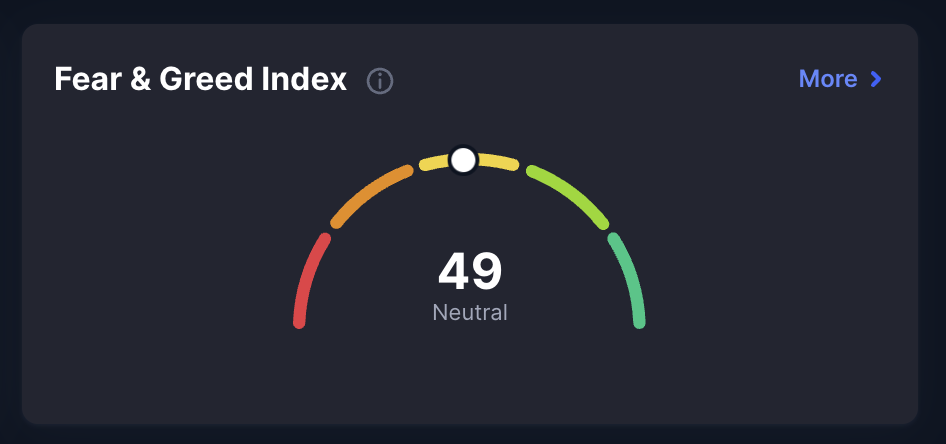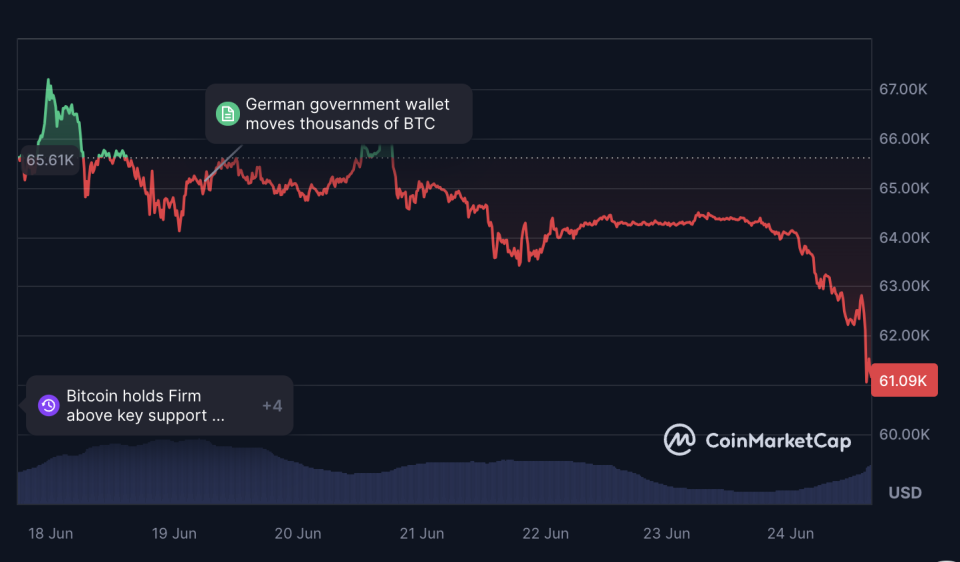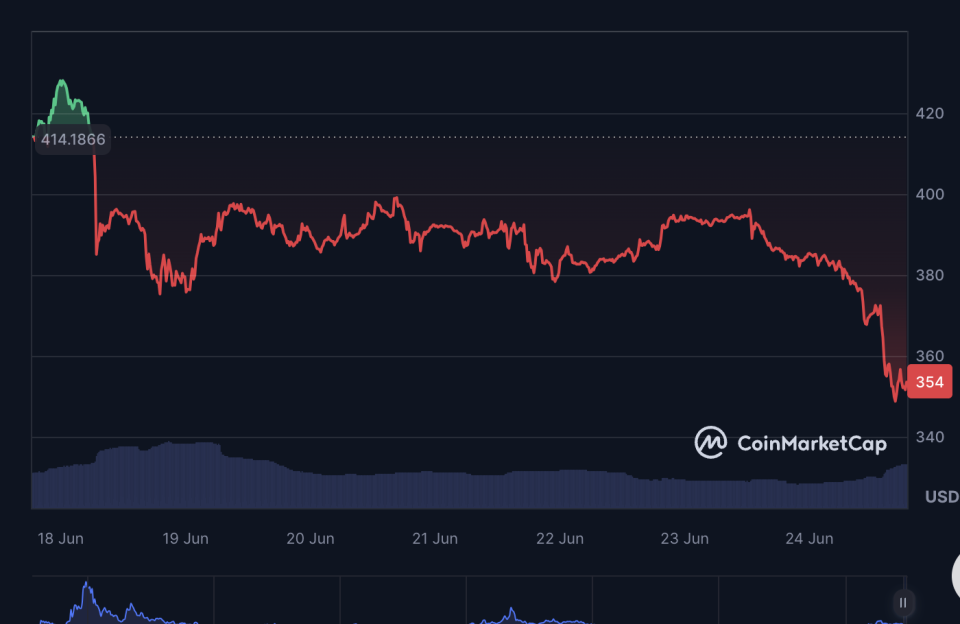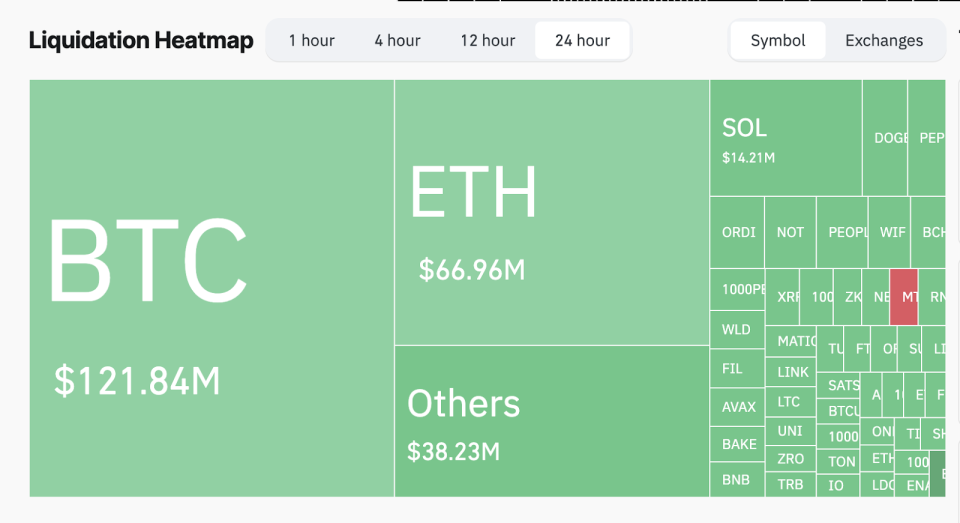What’s Causing the Bitcoin Price Decline?
06/24/2024 22:09
A closer look at the multiple factors influencing Bitcoin's current market volatility.
The market is all red once again.
Over the past week, Bitcoin has shed nearly $5,000 from its value, plummeting from a comfortable perch above $66,000 to hover around the $61,000 mark (at the time of writing). This sudden plunge has left investors and analysts confused.
This sharp decline coincided with a significant shift in market sentiment. The Crypto Fear and Greed Index fell from 60 to 49 in just 13 days, moving from "Greed" to the edge of "Neutral" territory.
The sudden price drop and sentiment shift have left many wondering about the underlying causes.
Several key events in crypto appear to have influenced this market movement.
Let's jumpt to the details of what's been happening in the Bitcoin market and explore the factors behind this recent plunge.
Reason #1: German Government's Bitcoin Sale
The crypto market experienced significant turbulence following news that the German government is preparing to liquidate a substantial Bitcoin holding.
The German Federal Criminal Police Office (BKA) held approximately 50,000 BTC, seized from a piracy site in 2013, now valued at over $3 billion.
This news, which came to light a few days ago, likely triggered Bitcoin's initial drop from $66,000 to $63,000 - as can be seen on CoinMarketCap.
The prospect of such a large amount of Bitcoin potentially entering the market has understandably caused concern among investors.
Reports suggest that the German authorities have already begun the process, selling around 3,000 BTC in recent days. However, the bulk of the holding—47,000 BTC—remains to be sold.
The government appears to be taking a measured approach to minimize market impact, but investor anxiety persists.
Reason #2: Big Players Hitting the Brakes
The second major factor behind Bitcoin's recent price slide involves the market's biggest fish – the "whales."
Here's what's happening: Whales have suddenly become much less active. Data from Santiment shows that big transactions (over $100,000) dropped by 42% in just a couple of days. That's a significant change in behavior.
So why does this matter? Well, when whales slow down their trading, it often signals caution. This whale behavior is especially interesting as it's happening right after a period of heavy selling.
What does this mean for the market? It could be that these large investors are waiting to see if prices will drop further before they start buying again. Or they might be holding off on selling more to avoid pushing prices down too quickly.
Either way, when the whales get quiet, it's often a sign that the market is at a crossroads. Their next moves could give us clues about where Bitcoin's price might head in the coming weeks.
Reason #3: Mt. Gox Returns With Repayments
The defunct exchange has resurfaced and shaken things up once again. More than a decade after its collapse, Mt. Gox has announced that it will begin repaying its creditors – and the news has sent ripples through the Bitcoin market.
Mt. Gox's Rehabilitation Trustee, Nobuaki Kobayashi, announced that repayments in Bitcoin and Bitcoin Cash will start in early July.
Why is this such a big deal?
Well, Mt. Gox was once the biggest exchange in crypto before its dramatic closure in 2014.
This isn't a small change we're talking about. The three Mt. Gox wallets combined hold 141,686 BTC, worth approximately $8.71 billion.
The fear is simple: as creditors finally get their hands on their long-lost Bitcoin, many might rush to cash out. This potential flood of Bitcoin hitting the market has investors on edge.
The impact was almost immediate. Bitcoin's price took a nosedive to $61,060, marking a 6.5% drop in just 24 hours. While it's since recovered slightly to around $61,300, the market remains jittery.
It's not just Bitcoin feeling the heat. Bitcoin Cash (BCH) also took a hit, dropping 9% in the wake of the announcement.
While the repayment process is set to begin soon, it's worth noting that it could stretch out over several months. The deadline for repayments was previously extended to October 2024, giving the market some breathing room.
Reason #4: Domino Effect
The recent Bitcoin price drop wasn't just about external factors. A significant internal market mechanism played a crucial role in amplifying the decline: cascading liquidations in the derivatives market.
Think of it as the crypto world's version of a domino effect, and it's been in full swing over the past 24 hours.
Here's what went down: As Bitcoin's price started to slip, it triggered a chain reaction in the derivatives market. According to data from Coinglass, $311.3 million worth of crypto positions were liquidated in just 24 hours.
Out of this $305.89 million, $275.75 million were long positions. In plain English, that means the vast majority of these liquidations hit traders who were betting on crypto’s price to go up.
This cascade of liquidations isn't the root cause of Bitcoin's price drop, but it certainly didn't help matters.
As the market navigates through these issues, it's clear that multiple factors are at play. The German government's Bitcoin movements, whale behavior shifts, Mt. Gox repayment plans, and cascading liquidations have all contributed to the recent price volatility.
While short-term fluctuations can be unsettling, they also provide valuable insights into market dynamics. As the dust settles, market participants will be keenly watching how these factors evolve and influence Bitcoin's trajectory in the coming weeks and months.





